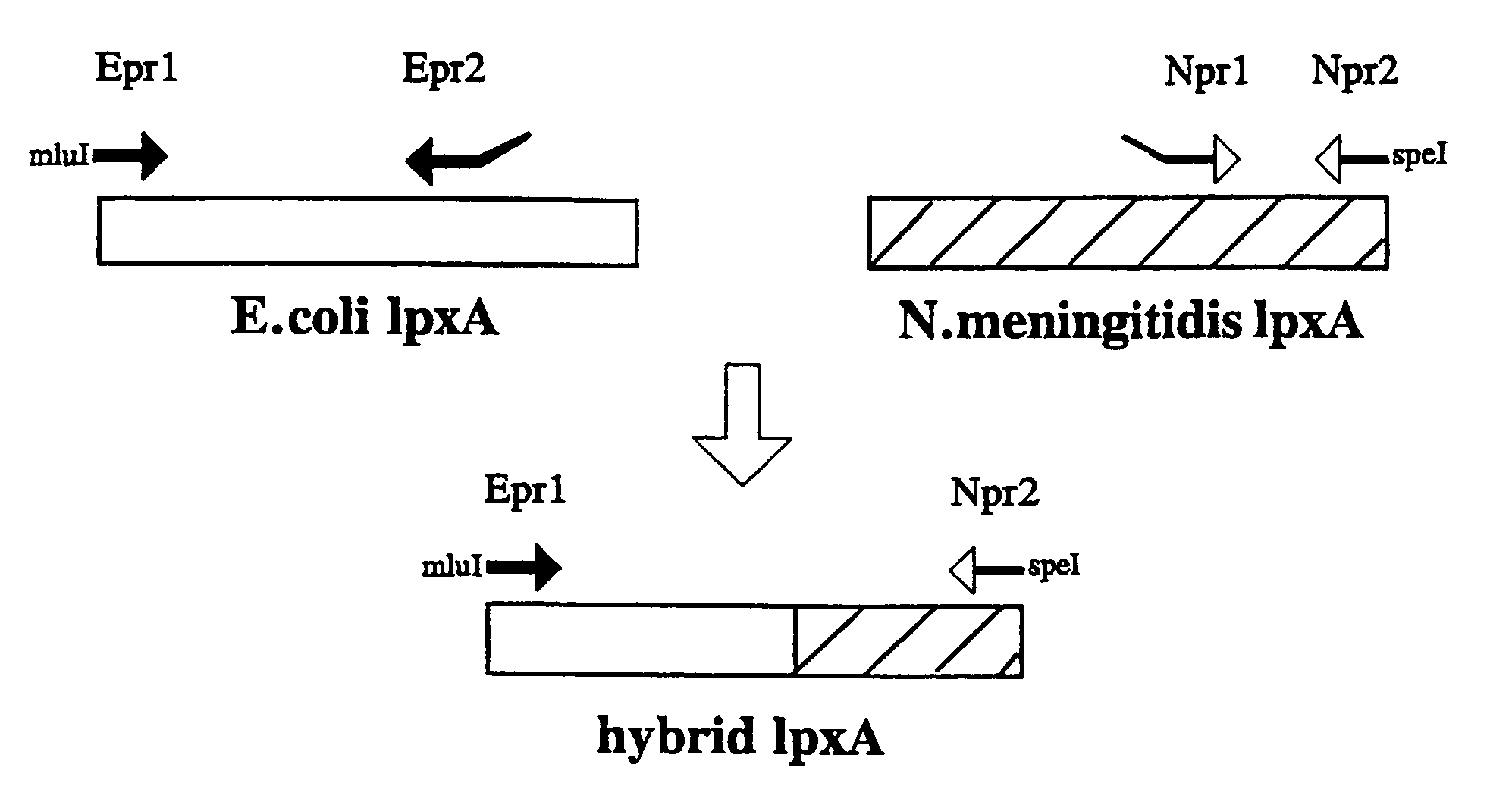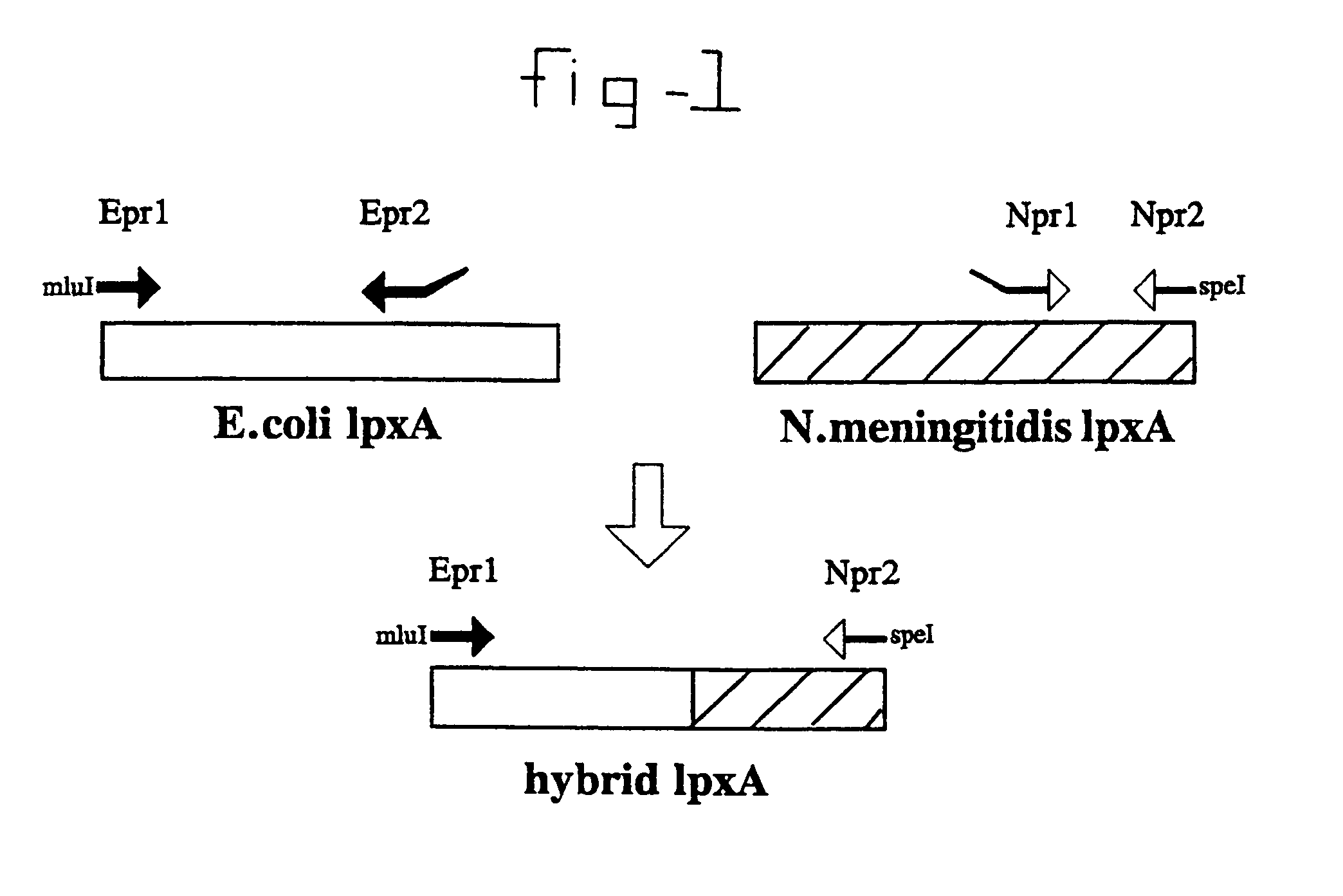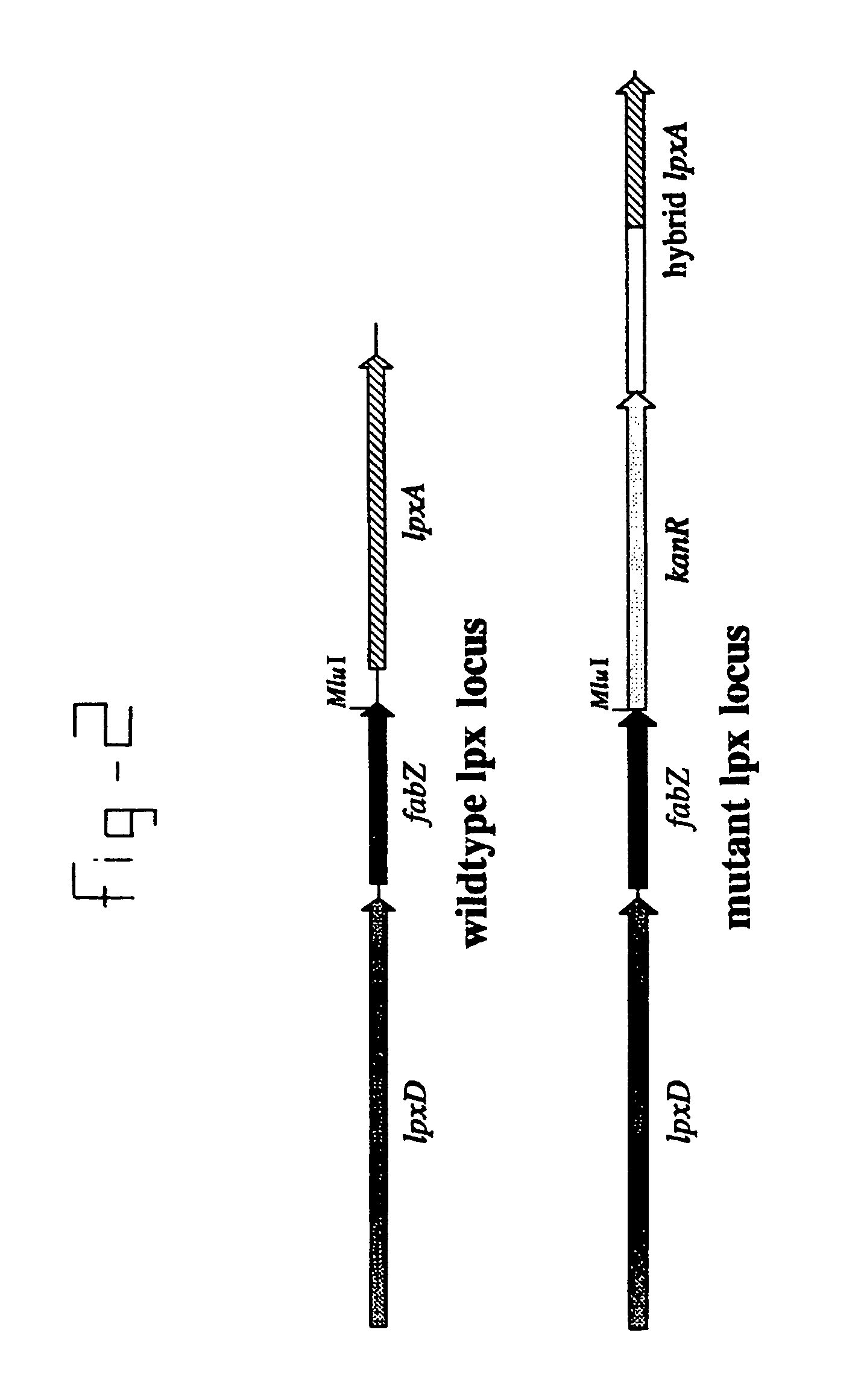Mutants of gram negative mucosal bacteria and application thereof in vaccines
a technology of gram negative mucosal bacteria and vaccines, which is applied in the direction of biochemistry apparatus and processes, animal/human proteins, non-active ingredients of pharmaceuticals, etc., can solve the undesirable endotoxin activity of vaccine preparations, no whole cell vaccines substantially free of lps nor omp vaccines substantially free of lps
- Summary
- Abstract
- Description
- Claims
- Application Information
AI Technical Summary
Benefits of technology
Problems solved by technology
Method used
Image
Examples
example 1
Construction of an inactive lpxA gene in N.meningitidis
[0024]In two separate PCR reactions the E.coli and N.meningitidis part of the hybrid gene were amplified with the Epri1 / Epr2 and Npr1 / Npr2 primer, respectively (FIG.1). The inside primers Epr2 and Npr1 were designed so that the ends of the products complementary sequences. These products were mixed, denatured and reannaeled in a second PCR in which the fused construct was amplified by the outside primers Epr1 and Npr2, having an MluI and SpeI site respectively (FIG. 1). The resulting PCR product was cloned and its sequence verified.
[0025]To test the activity of the hybrid lpxA, this gene was used to replace the original lpxA in the meningococcal chromosome (FIG. 2). For this purpose the 1.0 kb MluI / SpeI fragment carrying the wildtype lpxA gene in plasmid pLA19 (a pUC18 derivative with a 1.9 kb lpxD-fabZ-lpxA insert) was replaced by the similarly digested hybrid lpxA gene. Subsequently, a kanamycin-resistance cassette was ligate...
example 2
Construction of an lpxA knockout mutant
[0034]An lpxA knockout mutant of N.meningitidis was constructed by inserting a kanamycin-resistance cassette into the BstEII site located at position 293 within the lpxA gene of plasmid pLA21 (a pUC18 derivative with a 2.1 kb lpxD-fabZ-lpxA insert). The resulting plasmid pLAK33 was digested with XbaI / SacI and transformed to strain H44 / 76 with selection for kanamycin-resistance. As expected, the resulting colonies showed the same growth properties as the H44 / 76[pHBK30] mutant, indicating the lack of LPS. This was confirmed by a whole cell ELISA in which the lpxA knockout mutant did not bind any of the LPS-specific mAbs. These results demonstrated once more that blocking of the lipid A biosynthesis pathway in N. meningitidis strain H44 / 76 leads to viable LPS-deficient mutants.
PUM
| Property | Measurement | Unit |
|---|---|---|
| concentration | aaaaa | aaaaa |
| concentrations | aaaaa | aaaaa |
| constant current | aaaaa | aaaaa |
Abstract
Description
Claims
Application Information
 Login to View More
Login to View More - R&D
- Intellectual Property
- Life Sciences
- Materials
- Tech Scout
- Unparalleled Data Quality
- Higher Quality Content
- 60% Fewer Hallucinations
Browse by: Latest US Patents, China's latest patents, Technical Efficacy Thesaurus, Application Domain, Technology Topic, Popular Technical Reports.
© 2025 PatSnap. All rights reserved.Legal|Privacy policy|Modern Slavery Act Transparency Statement|Sitemap|About US| Contact US: help@patsnap.com



